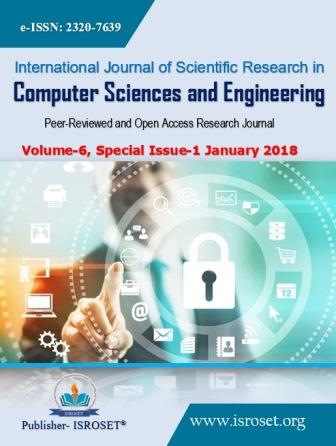Proliferation of Methods for Artificial Water Recharge Sites Using GIS
Keywords:
GIS, Boolean Operation, Indexing Overlay, Fuzzy Logic, Genetic AlgorithmAbstract
One of the major parameters which are useful for artificial water recharge site in each country is land use mapping, with context to land use mapping There is massive data quantity and intricate criteria for the site selection of artificial water recharge site that cause much more difficult for decision making. To overcome such optimisation problems for decision making GIS can be used as information system can answer “What is the optimum solution?” with respect to the GIS users’ requirements. The overlay is one of the spatial functions that can unite spatial data. Integration methods, based on their implementation methods, are divided into some groups Boolean operation, Indexing overlay, Fuzzy logic, Genetic algorithm, Weight of confirmation. In this study, at first, we selected a study area that was convenient for our purpose. Further, we assigned efficacious parameters with proper criteria to define artificial water sites with the corresponding data layer. After this process, we have classified the layer and prepare data for the respective layer with important criteria. Index overlay, fuzzy logic, and genetic algorithm were executed on data to identify the artificial water recharge sites with GIS.
References
Hamid Ebadi, Roozbeh Shad, Mohamad Javad Valadanzoej,Alireza Vafaeinezhad: Evaluation of Indexing Overlay, Fuzzy Logic and Genetic Algorithm Methods for Industrial Estates Site Selection in GIS Environment
Bonham Carter and G.F., 1991. Geographic Information System for Geoscientists: Modelling with GIS, Pergamon, Ontario, PP. 319-470.
Aronof, S., 1989. Geographic Information Systems: A Management Perspective, Ottawa, Canada: WDL Publications.
Zimmermann, H.J. and Zayo, P., 1980. Latent Connectives in Human Decision Making: Fuzzy Sets and Systems, Chapter 4: PP. 37-51.
Gen, M., 1997. Genetic Algorithms and Engineering Design, John Wiley, Newyork, PP. 5-63.
M.L.Waikar1 and Aditya P. Nilawar2: Identification of Groundwater Potential Zone using Remote Sensing and GIS Technique, Vol. 3, Issue 5, May 2014, ISSN: 2319-8753
An, P., Moon, W.M., 1991. “Application of Fuzzy Set Theory for Integration of Geological, Geophysical and Remote Sensing Data.”, Canadian Journal of Exploration Geophysics,Chapter 27: PP. 1-11.
Downloads
Published
How to Cite
Issue
Section
License

This work is licensed under a Creative Commons Attribution 4.0 International License.
Authors contributing to this journal agree to publish their articles under the Creative Commons Attribution 4.0 International License, allowing third parties to share their work (copy, distribute, transmit) and to adapt it, under the condition that the authors are given credit and that in the event of reuse or distribution, the terms of this license are made clear.







